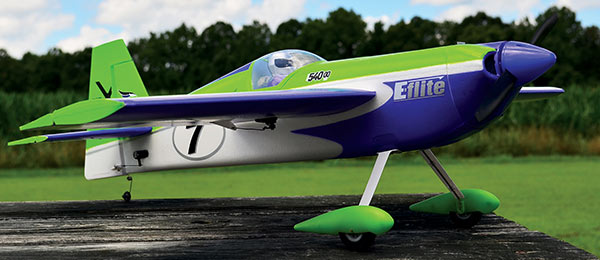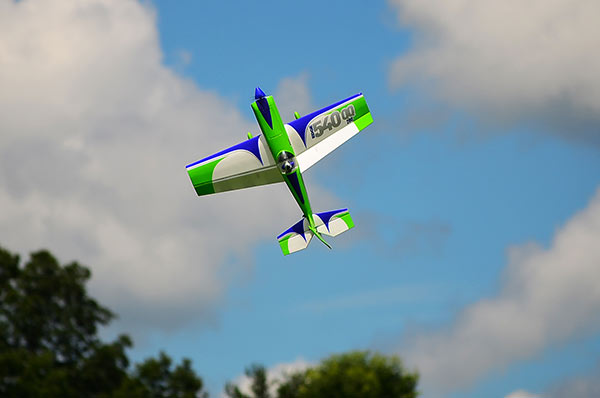E-flite Edge 540QQ 280BNF Basic

Written by Chris Mulcahy. Add some 3-D excitement to your small-field flying. Read the complete review in the November 2013 issue of Model Aviation magazine.
Article Excerpts
I enjoy flying my Giant Scale airplanes. I get a kick out of flying precision-style maneuvers and I have fun flying 3-D. My local flying club is nearly an hour away, and I really have to make a day of it to make the trip worthwhile. I hook up my trailer and spend an entire day out at the field. This is one of the reasons I was excited about the 280-size E-flite Edge 540QQ. Its diminutive size meant that it was ideal for running out to the local park (which is only 5 minutes away) to get in those invaluable flying fixes through the week. As small as it is, it shouldn’t be mistaken as a beginner’s airplane or as something closer to a toy than a “real” model. The Edge is capable of extreme flight, and has one of the most ridiculously fun and fast roll rates I’ve ever seen on a model this size. The BNF Edge only needs a few items to get it in the air—primarily a transmitter. Any four-channel (or more) DSMX or DSM2 transmitter will work. The Edge’s assembly is straightforward; attach the wings and you’re done! I started by removing the plastic vented hatch on the bottom of the fuselage. It is held in with a single screw, and the vents allow the air traveling through the fuselage to escape. This airflow helps keep the electronics cool inside. I test any new model at a designated flying club, and the Edge was no exception. Once at the field, I inserted the battery into the fuselage as far forward as it would go, powered up the transmitter, and plugged in the battery. The motor armed, as indicated by several beeps. I tested the control surfaces to make sure everything was going in the right direction, and I was ready for the first flight. At full throttle, the Edge jumped off the ground in roughly 2 feet. Even on the recommended low rates, the ailerons were slightly twitchy, so I flew a circuit and landed. I reduced the aileron throw by approximately 10%. This time the ailerons felt perfect. The Edge still rolled fast on low rate, but the twitchy feeling at center stick was gone.
The Edge hovers well, and I found myself having to dial down my reactions. Because of the Edge’s extreme throws, it was easy to overcorrect. A few attempts later I started to get the hang of hovering, and it hung from the propeller with plenty of power to punch out. The Edge is not for beginners, but it can be tamed enough that moderate-to-advanced pilots will be able to handle it with ease. Read the entire review in the November 2013 issue of Model Aviation.










2 comments
E-flite Edge 540QQ 280BNF Basic
Video Presentations
Add new comment